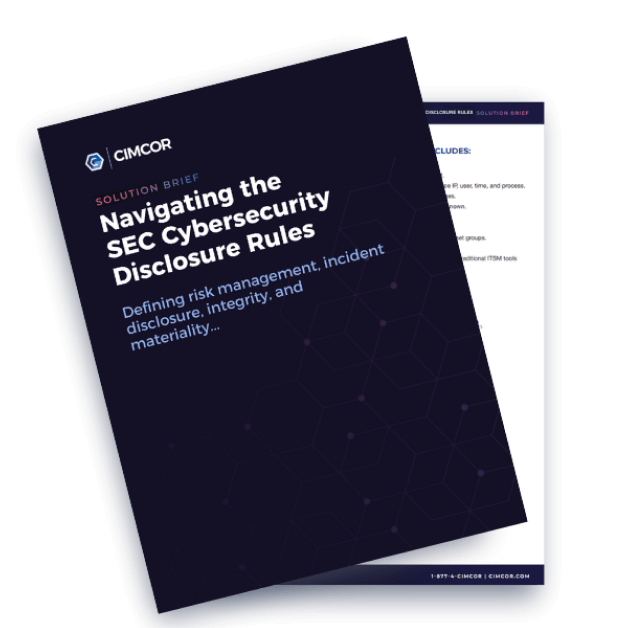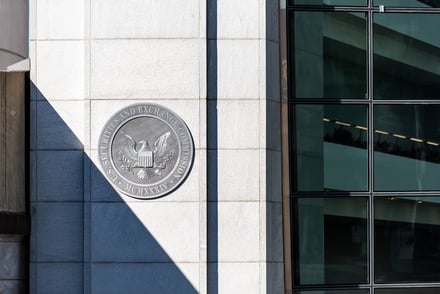Exploring the SEC's New Cybersecurity Risk Management and Incident Disclosure Rules: Enhancing Investor Confidence (Part 1 of 4)
In an increasingly digitized world, where businesses rely heavily on technology and data to function, the importance of robust cybersecurity measures cannot be overstated. Recognizing the growing significance of cybersecurity risk in public companies, the US Securities and Exchange Commission (SEC) has taken a significant step forward by adopting new rules and regulations pertaining to cybersecurity risk management and incident disclosure of public companies. These regulations aim to safeguard investors, promote transparency, and embrace a crucial step in developing cybersecurity governance.
For the full details, see: SEC July 26, 2023 release
Understanding the New Rules and Regulations
The SEC's new rules and regulations address two main aspects: cybersecurity risk management and incident disclosure.
Cybersecurity Risk Management: The regulations emphasize the need for effective cybersecurity risk management strategies within publicly traded organizations. This involves the establishment of comprehensive cybersecurity policies and procedures designed to identify, protect, detect, respond, and recover from potential threats. By implementing these measures, companies can proactively safeguard sensitive data, mitigate cybersecurity risk, and maintain the trust of investors.
Incident Disclosure: In the event of a cybersecurity incident, transparency is paramount. The regulations mandate timely and accurate disclosure of incidents (four days maximum) that could potentially impact a company's operations or its investors. This requirement ensures that investors are promptly informed about cyber incidents' risks and potential consequences so they can make informed decisions about their investments.
The new rules and regulations will require companies to disclose any cybersecurity incident on the new Item 1.05 of Form 8-K as well as add Regulation S-K Item 106, which will require companies to describe their processes for assessing, identifying, and managing material risks and effects from cybersecurity threats and incidents.
The Rationale Behind the Regulations
The adoption of these regulations by the SEC is driven by several key considerations:
Investor Protection: The primary goal of the regulations is to protect investors' interests. By requiring companies to establish effective cybersecurity protocols and disclose incidents that could impact their financial standing, investors are better equipped to assess the risks associated with their investments.
Market Integrity: The stability and integrity of financial markets are essential for sustainable economic growth. If left undisclosed, cyber incidents can undermine market integrity and erode investor confidence. These regulations aim to uphold market stability by promoting transparency and accountability.
Rising Cyber Threats: With the increasing frequency and sophistication of cyberattacks, publicly traded companies have become targets for malicious actors that exploit vulnerabilities. The regulations acknowledge the evolving nature of cyber threats and provide a framework for preemptive risk management.
Global Trends: The SEC's move is in alignment with global trends in regulatory frameworks. Many international companies and organizations have recognized the need for enhanced transparency and cybersecurity measures, thereby encouraging collaboration and cooperation across jurisdictions.
Benefits and Impacts
The implementation of the SEC's cybersecurity regulations carries several benefits and impacts:
Enhanced Investor Confidence: The regulations inspire investor confidence by demonstrating that financial organizations are proactively safeguarding their investments from cyber threats. Transparent incident disclosure also enables investors to make informed decisions about their portfolios.
Elevated Cybersecurity Posture: Companies will be incentivized to elevate their cybersecurity posture by implementing more robust risk management practices that include integrity and compliance functionality. This, in turn, reduces the likelihood of successful cyberattacks and their potential impact on operations.
Standardization and Accountability: The regulations establish a standard framework for cybersecurity risk management and incident disclosure. This consistency streamlines compliance efforts and holds companies accountable for their cybersecurity strategies.
Identify Material Cybersecurity Incidents: A material cybersecurity incident occurs when an organization's information systems or data security measures are compromised, resulting in unauthorized access, disclosure, alteration, or destruction of sensitive information that can negatively impact operations and the profitability of an organization.
Shift in Organizational Culture: The emphasis on cybersecurity risk management and incident disclosure could lead to a cultural shift within organizations, where cybersecurity becomes an integral part of business operations and decision-making.
CimTrak: Empowering Compliance and Cybersecurity Resilience
As public companies adapt to these new regulatory requirements, innovative cybersecurity solutions like CimTrak become essential tools for success. CimTrak offers a dynamic and versatile approach to cybersecurity risk mitigation, aligning seamlessly with the SEC's cybersecurity guidelines.
- Real-Time Monitoring and Integrity Assurance: CimTrak offers real-time monitoring of critical systems and devices. It tracks any unauthorized changes and suspicious modifications, providing immediate alerts and automated responses. This ensures that any potential cybersecurity incident or compliance violation is promptly detected and addressed.
- Compliance Auditing: The solution assists in maintaining compliance by offering detailed audit trails and reports. These logs demonstrate the organization's commitment to cybersecurity and can be invaluable during regulatory audits.
- Configuration Management: CimTrak aids in maintaining compliant configurations by comparing system states against predefined and trusted baselines. This functionality ensures that systems adhere to the desired security posture, reducing the risk of potential cybersecurity incidents stemming from misconfigurations.
- Incident Detection and Response: In line with the SEC's incident response requirements, CimTrak can play a crucial role by promptly identifying, reporting, and containing cybersecurity incidents. This allows organizations to take swift action, minimize damage, and fulfill regulatory obligations.
- Demonstrable Accountability: CimTrak's comprehensive reporting capabilities help organizations provide evidence of their cybersecurity measures to regulatory bodies. This transparency enhances trust among investors, stakeholders, and regulators alike.
Conclusion
The SEC's adoption of cybersecurity risk management and incident disclosure rules marks a significant stride towards a more secure and transparent financial landscape. By prioritizing investor protection, market integrity, and the recognition of evolving cyber threats, these regulations are poised to enhance both the cybersecurity posture of financial organizations and investor confidence. As the digital landscape and topography continue to evolve, these regulations serve as a beacon of accountability and resilience in the face of growing cyber risks.
Amid these regulatory changes, solutions like CimTrak emerge as vital allies for organizations striving to comply with the new rules and fortify their cybersecurity defenses. With its real-time monitoring, compliance auditing, configuration management, and incident response capabilities, CimTrak stands as a formidable weapon in the ongoing battle against cyber threats, safeguarding sensitive financial data and maintaining investor trust in an increasingly digitized world.
Disclaimer: This blog article is only a brief summary of the new Cybersecurity Risk SEC rule and does not constitute legal advice. Should you encounter a situation that constitutes a Cybersecurity Incident or any matter touched upon in this article, you should consult with legal counsel having experience in this area of the law and not rely on the information provided in this article.
Tags:
Cybersecurity
August 18, 2023




